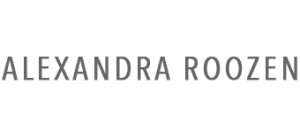Interview Apropos Art
by Elsbeth Grievink
2021

“Experiments lead me to new questions, taking me deeper and deeper into that unknown world.”
Alexandra Roozen’s repetitive pencil drawings need to be seen in real. Up close, you get the full experience of their impact. During her studies, Alexandra Roozen became fascinated by the fundamentals of painting. She analysed and questioned every aspect: the canvas, the stretcher bars, the paint, and also the use of colour. To circumvent the symbolism of colour, Roozen deliberately chose a material with no colour associated with it: graphite – a choice to which she remains loyal. Roozen’s large graphic structures explore the act of drawing through accumulations of many thousands of stripes, scratches, or dots. In doing so, she allows her work to provide her with new routes of enquiry.
How do you proceed?
‘Each new series starts with a basic layout. On paper, I use an underlying pattern to predetermine every measure and every action. What I can’t predict, however, is the physical aspect. The condition of my arm can change from day-to-day. Today the pressure of my hand on the paper might be a bit harder or softer than it was yesterday. If I’m stressed, then the tip of my pencil breaks more often, which shows on the paper. This aspect has a lot of influence and generates differences between one drawing and another.’
You once put a pencil in a drill. Why?
‘Since my drawings are laborious, I was playing with the idea of a mechanical tool. There was a drill in the studio, so I replaced the drill bit with a pencil and was surprised by the mark it left on the paper. It led to a new question about the classical notion of the artist’s hand: can something or someone else make my drawings?’
The Research & Development scheme provided support to further your enquiry into that question. How did you proceed?
‘I started working with a plotter that I fitted with pencils. I soon became the machine’s assistant: I had to sit next to it all the time, feeding it pencils. The results deviated from when I do the same work by hand. The basic pattern was identical, but the shading looked different. From that perspective, I could say that a machine has its own handwriting. Such realisations offer content and direction to my artistic practice.’
What’s your next step?
‘I’m now looking at the sensuality of drawing. By experimenting with film, I want to appeal not only to the eyes but also to the ears and the sense of touch.’
What do the experiments bring?
‘Experiments lead me to new questions, taking me deeper and deeper into that unknown world. I have to maintain my trajectory constantly, so sometimes it’s hard work. But it’s worth the effort when I make fantastic discoveries.’
Magazine Art Rotterdam


